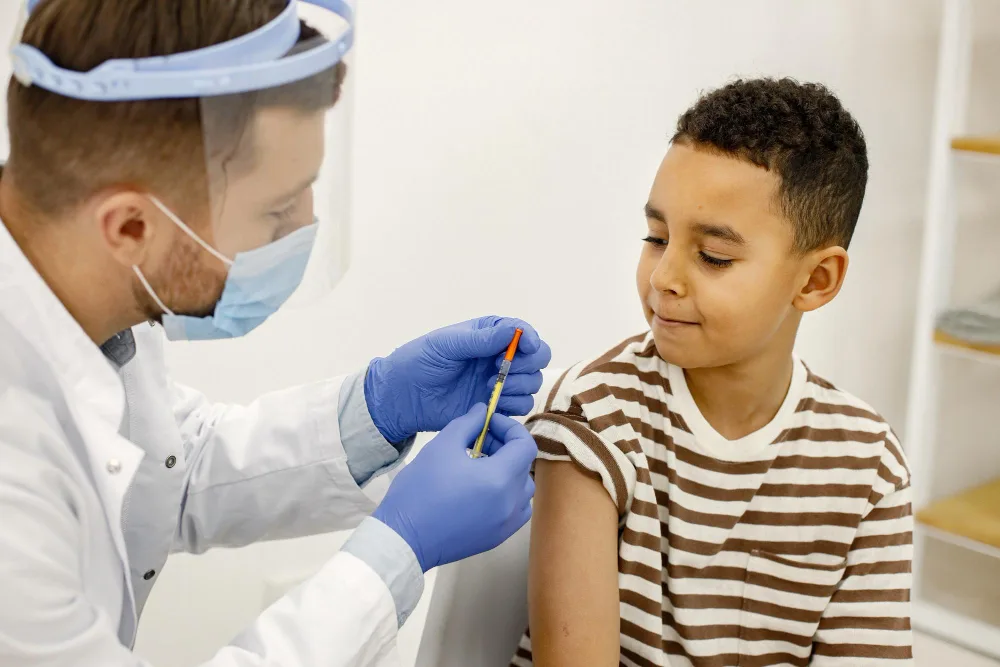How do Pediatric Allergist diagnose allergies in children?
Diagnosing allergies in children involves a detailed and multifaceted approach, tailored to the unique needs and conditions of the pediatric population. Pediatric allergists integrate a combination of medical history evaluation, physical examination, and specific diagnostic tests to accurately identify and manage allergies in children. We will delve into the intricacies of the diagnostic process, the types of allergies commonly found in children, and the methodologies used to ensure accurate diagnosis.
Understanding Allergies in Children
Allergies occur when the immune system reacts to a foreign substance—such as pollen, bee venom, pet dander, or a particular food—that doesn’t cause a reaction in most people. Children can develop allergies to a wide range of substances, with symptoms affecting the skin, respiratory system, gastrointestinal tract, and in severe cases, leading to anaphylaxis—a potentially life-threatening reaction.
Initial Assessment
The diagnostic journey begins with a thorough initial assessment:
Medical History
A comprehensive medical history is the cornerstone of allergy diagnosis. Pediatric allergists inquire about the child’s symptoms, their onset, duration, and any apparent triggers. This includes understanding the environments in which symptoms worsen or improve, dietary intake, family history of allergies, and any previous treatments and their outcomes.
Physical Examination
Following the history, a physical examination helps identify physical signs of allergic conditions, such as eczema, hives, nasal congestion, or asthma. The examination also assesses the child’s overall health and checks for other conditions that might explain the symptoms.
Diagnostic Testing
After gathering preliminary information, specific tests are employed to pinpoint the allergens responsible for the child’s symptoms:
Skin Prick Testing (SPT)
- Skin prick testing is the most frequently used diagnostic test for environmental and food allergies. It involves applying a tiny amount of the suspected allergen to the skin and making a small prick or scratch. A positive reaction, typically a raised bump resembling a mosquito bite, indicates an allergy.
Blood Tests
- Specific IgE antibody tests measure the presence of allergy-related antibodies to particular allergens in the blood. This test is useful when skin testing is not feasible or when confirming sensitization to specific allergens.
Patch Testing
- Used primarily for diagnosing contact allergies (e.g., to nickel or fragrance), patch testing involves applying patches with allergens on the skin for 48 hours to observe for delayed allergic reactions.
Oral Food Challenges
- Oral food challenges are considered the gold standard for diagnosing food allergies. Under controlled conditions, the child consumes gradually increasing amounts of the suspected allergenic food. This test requires careful supervision by an allergy specialist due to the risk of severe allergic reactions.
Component-Resolved Diagnostics (CRD)
- CRD tests blood for specific components of allergens, offering a more detailed view of what part of the allergen triggers the allergic reaction. This is particularly useful for assessing the risk of severe reactions and guiding dietary recommendations.
Elimination Diets
For suspected food allergies, an elimination diet—removing the suspected allergen from the diet and then reintroducing it to observe for reactions—can be instructive. This approach requires meticulous planning and monitoring to avoid nutritional deficiencies.
Interpreting Test Results
Interpreting the results of allergy tests requires expertise. A positive test alone does not confirm an allergy; it must be correlated with the child’s history and clinical presentation. Likewise, a negative test can help rule out certain allergies but requires careful consideration of the overall clinical picture.
Differential Diagnosis
Part of diagnosing allergies involves distinguishing them from other conditions with similar symptoms. For example, food intolerances, infections, autoimmune diseases, and other non-allergic conditions can mimic allergic reactions. A detailed evaluation helps ensure accurate diagnosis and treatment.
Developing a Management Plan
Once the allergens are identified, a comprehensive management plan is formulated. This includes strategies for allergen avoidance, pharmacotherapy for symptom management, and in some cases, immunotherapy to decrease sensitivity to allergens. Education on recognizing and managing allergic reactions, including the use of emergency medications like epinephrine auto-injectors, is crucial.
The Role of the Family
Diagnosing allergies in children is a collaborative process involving the child, family, and healthcare team. Families play a vital role in managing allergies, from implementing avoidance strategies to monitoring for and responding to allergic reactions. Education and ongoing support from healthcare providers empower families to navigate the challenges of living with allergies.
Future Directions
Advancements in allergy diagnostics continue to refine our understanding and management of pediatric allergies. Molecular allergology, for example, offers insights into specific allergen components responsible for reactions, paving the way for more personalized and targeted approaches to diagnosis and treatment.
Conclusion
Diagnosing allergies in children is a comprehensive process that requires careful history-taking, physical examination, and judicious use of diagnostic tests. By accurately identifying the causative allergens and understanding the child’s allergic responses, pediatric allergists can develop effective management plans to protect children’s health and improve their quality of life. The ongoing evolution of
------------From our Sponsors------------









